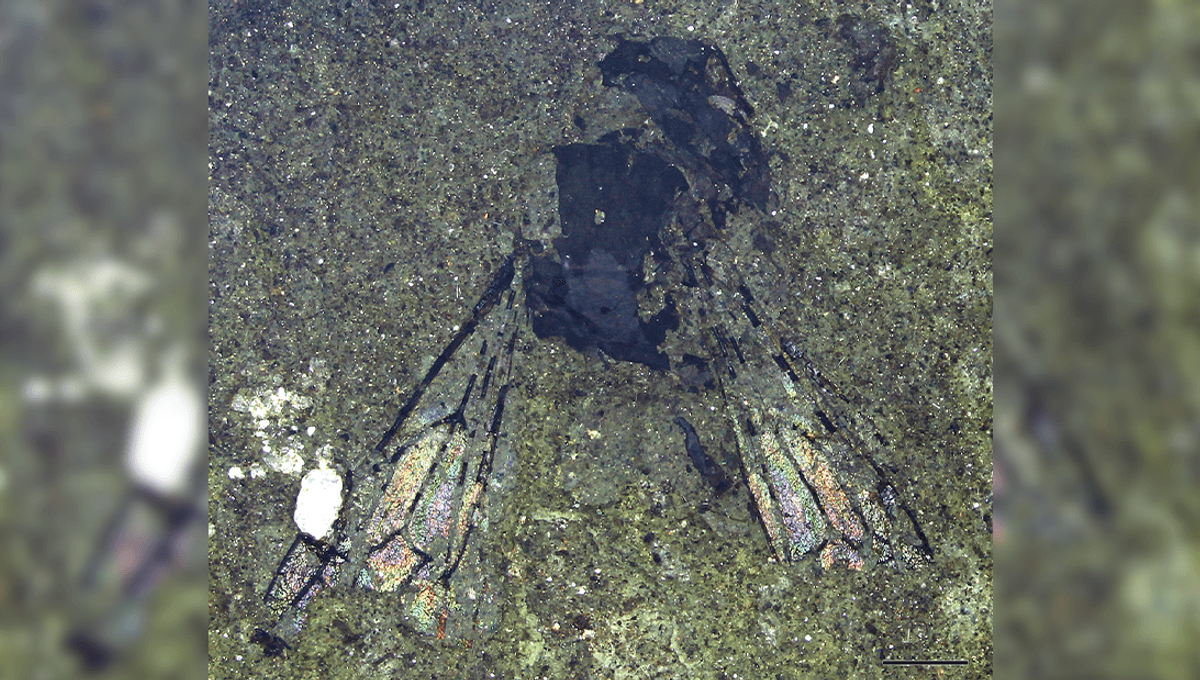
Finding fossils of any species is an exciting discovery for science, but some are a little bit more special than others. In New Zealand, a 14.6-million-year-old fossilized bee has been discovered, marking the first fossil bee to be uncovered from Zealandia.
ADVERTISEMENT GO AD FREE
Near the township of Outram in Otago on the South Island of New Zealand, is the Hindon Maar Complex, which is dated to the middle of the Miocene. This area includes four closely spaced volcanoes and has previously yielded relatively high amounts of fossil insects of different orders.
The fossil bee discovered here was preserved in organic mudstone and has been named Leioproctus (Otagocolletes) barrydonovani. The bee is a female and measures 6.4 millimeters (0.25 inches) in total length. The authors think that the veins on the wings are similar to three subgenera of extant Leioproctus bees native to New Zealand.
However, the team think that if the Leioproctus genus had been present in New Zealand before 14.6 million years ago, the group would have had time to diversify or develop specialization related to the flowers around at the same time.
“Some insect lineages have clearly thrived and evolved unique features within New Zealand, but many are conspicuously and enigmatically depauperate given the complexity and scale of the landscape, seemingly reflecting their late arrival to the islands,” wrote the authors.
Currently, there are only 18 species of endemic Leioproctus in New Zealand, suggesting something happened to cause this: “interactions prevented the lineage from more extensive speciation,” suggest the authors. The researchers also think that the modern Leioproctus could represent times when the genus came to New Zealand, unrelated to the bee species currently there.
“In fact, there are currently no data to indicate that the three groups of Leioproctus in New Zealand form a monophyletic group, and they themselves could represent multiple, younger invasions of the islands,” write the authors.
ADVERTISEMENT GO AD FREE
The team think that the bee would have lived in mixed broadleaf forests that surrounded the Miocene maar lake. There is no known host plant for the new species and no pollen was found attached to the fossil. Pseudopanax flowers have been found at the same deposit and could suggest the bee visited those species along with other plants.
The paper is published in Zoosystema.
Source Link: Incredible 14.6-Million-Year-Old Fossil Bee Discovered In New Zealand